

Are you searching for a DMIT Test in Kolkata? Brainwonders DMIT Test Centre in Kolkata offers the best DMIT Test at the best price in Kolkata. The DMIT (Dermatoglyphic Multiple Intelligence Test) is a science that studies the patterns on our fingers. Our brain has 5 lobes: Prefrontal, Frontal, Parietal, Temporal, and Occipital. These lobes are divided into two parts, just like our brain is divided into the Left Brain and the Right Brain. They develop between the 13th and 19th week of gestation while the child is in the mother's womb. Our fingerprints develop simultaneously, and each finger is associated with a specific lobe of the brain.
The DMIT analysis helps us understand an individual's innate potential. Since our fingerprints remain the same throughout our lives, the DMIT Test results also stay constant, even if you retake the test in a few years. This test helps identify one's passions and preferences, allowing them to align their choices with their interests. It also aids in recognizing comfort zones and planning a career path from a young age.
The DMIT test provides insights into an individual's brain potential, behaviour and a SWOT analysis (Strengths, Weaknesses, Opportunities, and Threats). It also offers an understanding of personality, learning style, and growth potential in various areas. The DMIT Test is suitable for all ages, including toddlers, kids, and adults, with varying purposes depending on the age group.
Right Brain is corresponding to Left Hand and Left Brain is corresponding to Right Hand
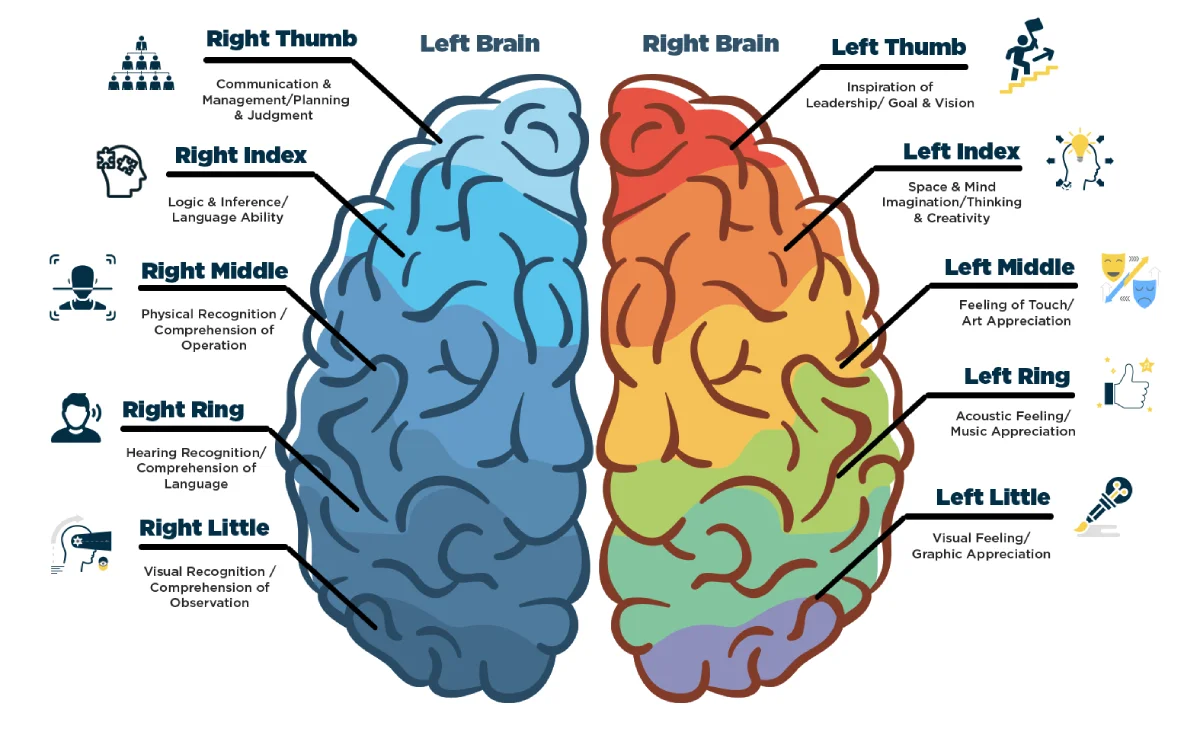

U.S. Patented DMIT Test for toddlers and infants is widely accepted. Infancy and toddlerhood- the age of 0-2 years and 3-5 years, respectively, is where 60% of brain development happens. Several medical and statistical studies also state that early identification of suitable learning styles and innate traits can maximise effective development by 80%.
Parents face challenges in deciding what's best for their babies and toddlers who can't understand speech. Every parent wants to help their child succeed, but with direction, it's easier. Toddlers are like blank slates, learning everything. Brainwonders' U.S. Patented DMIT Test uses biometric analysis to map a child's inborn profile, providing guidance during this critical learning period.
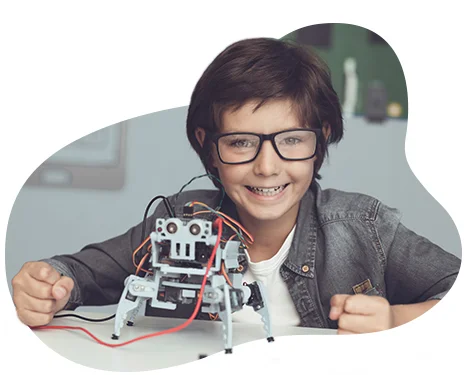
U.S. Patented DMIT Test for children is an extremely popular choice. The age of 6 years and 12 years is what is needed for anyone to be interested in the stage as around 90% of brain development has occurred at any point before this age; hence it is very crucial to students, parents and teachers to regulate all three with respect to developmental activities definitively at this age period.
Students now find it tough to settle for anyone, be it CBSE, ICSE, IGSCE, I.B. or even that belonging to a State Board, and consequently ensure scores that allow one a go at primary and secondary education. Most importantly, the emotional aspect of education and the huge dependency that parents place on the school to take good care of their children. For the DMIT Test as patented in the USA for research basis, Biometric students found in Brainwonders would now be able to identify their genetic-born profile and know what is the best nurturing approach for their development.


Education and academic development cater to a big part of any human life. This is where one prepares for a career while developing personally as well. Though there are several defining moments in a student’s life, high school or 8th-10th standard are clearly where things take a significant turn. This is the age when the child closes towards cognitive maturity, and the body develops biologically. Thus, the early teenage years mark a definitive period for students.
Many students and parents seek personality assessments and career counselling as decisions made during this stage have lifelong impacts. High school students from various education boards in the 8th, 9th, and 10th standards benefit from the U.S. Patented DMIT Test by Brainwonders. This test helps map careers based on a child's innate strengths, traits, and learning styles, facilitating personal, social, and professional development.

U.S. Patented DMIT Test for adults is important. Adulthood is defined by the age of 25 years and above and consists of middle age and old age as well. As an adult, it is safe to say that one has journeyed at least 30% of their life. Adulthood brings with it several responsibilities and opportunities. It is crucial to note that no one needs to make and take the onus of their decisions. Thus, the U.S. Patented DMIT Test helps one to look forward to and win over the next milestone(s) by knowing and playing to your inborn traits:

The scope of the DMIT Test in Kolkata is quite promising and wide-ranging. Kolkata, being a vibrant and populous city, offers numerous opportunities for the application and benefits of the DMIT Test. Here are some aspects that contribute to its scope:
Parents often misunderstand their children simply because they do not know their inborn characteristics (curious, aggressive, rebellious, persistent, etc.) To understand and develop an effective way to interact with your child based on their inborn communication style. To understand and develop an effective interaction method with your child. DMIT can be used for self-evaluation and compatibility with your spouse or business partner for adults.
Parents should place their child in courses or preschool where its curriculum suits the child's inborn learning style (i.e. kinesthetic learner learns best at Montessori due to its activity-based method). To eliminate the 'trial and error' situation when parents send their child to a specific class (i.e. art class or music class) without knowing if the child can comprehend. As for adults, DMIT will reveal to them the strength they possess and guide them to perform better at work.
Every child is unique, and they possess different inborn talents to use a scientifically proven method (up to 95% accuracy) to reveal a child's inborn potential (strength and weakness). To give parents an insight into their child and to groom them effectively to the talents they possess. To enable parents to focus on their child's strength and to eliminate the 'guessing game' on their talent.
Dermatoglyphics report is a very important guideline for a child to refer to when choosing a university major that best suits their inborn abilities and potential. After graduation, the dermatoglyphics report will again help recommend closing their career path. As for adults, this test can be a good reference for those who intend to make a career change, venture into a new business, or pick up a new skill/education.
Parents may have various understandings of DMIT (Dermatoglyphics Multiple Intelligence Test), but here are some common things they may understand or expect from it:
Implementing the study of fingerprints to help discover & expand an individual's potential.
There are no two identical fingerprints. One's 10 fingers are not the same. Dermatoglyphics style, striae height, density, quantity and location of the point is not the same for everyone. No individual has ever displayed the same fingerprint from another digit even if taken from the same hand.
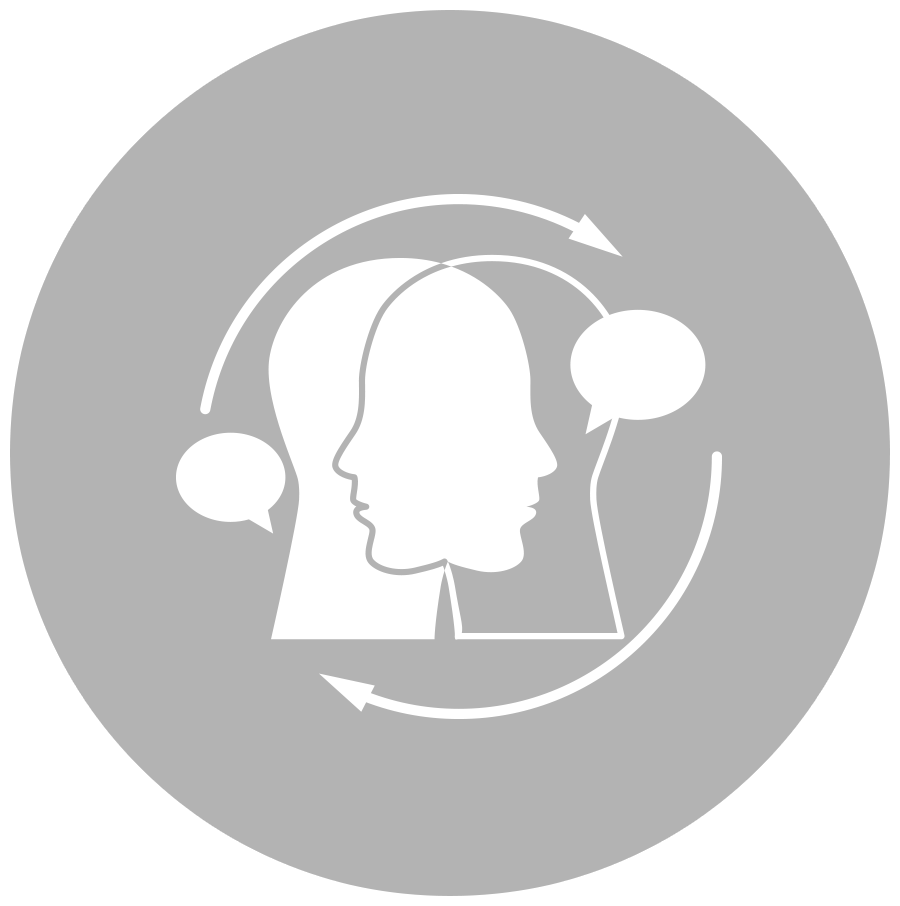
The raised pattern network of lifetime from birth to death will not change even if it is due to the regeneration of the labor dermatoglyphics style, quantity and profile shape which is determined the same later.
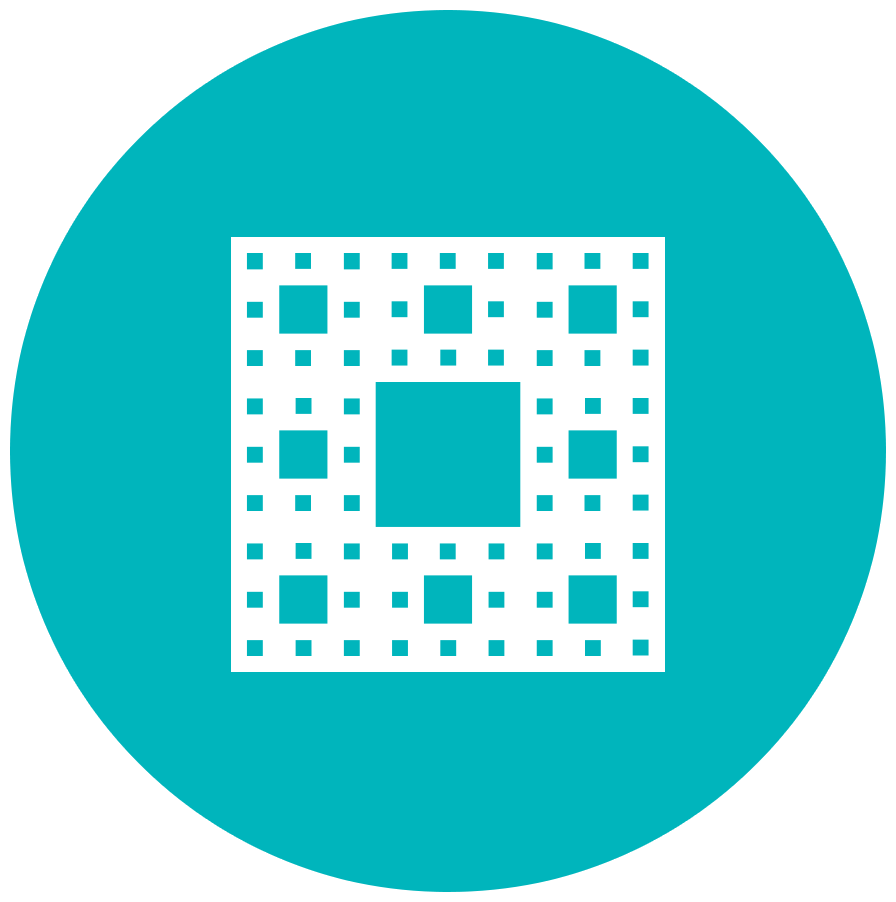
According to science statistics, immediate family members will be more or less the same between the striae. Normal human cells chromosomes may have a mutation due to a structural change resulting in striae mutation. Therefore, the striae have inherited the mutation.
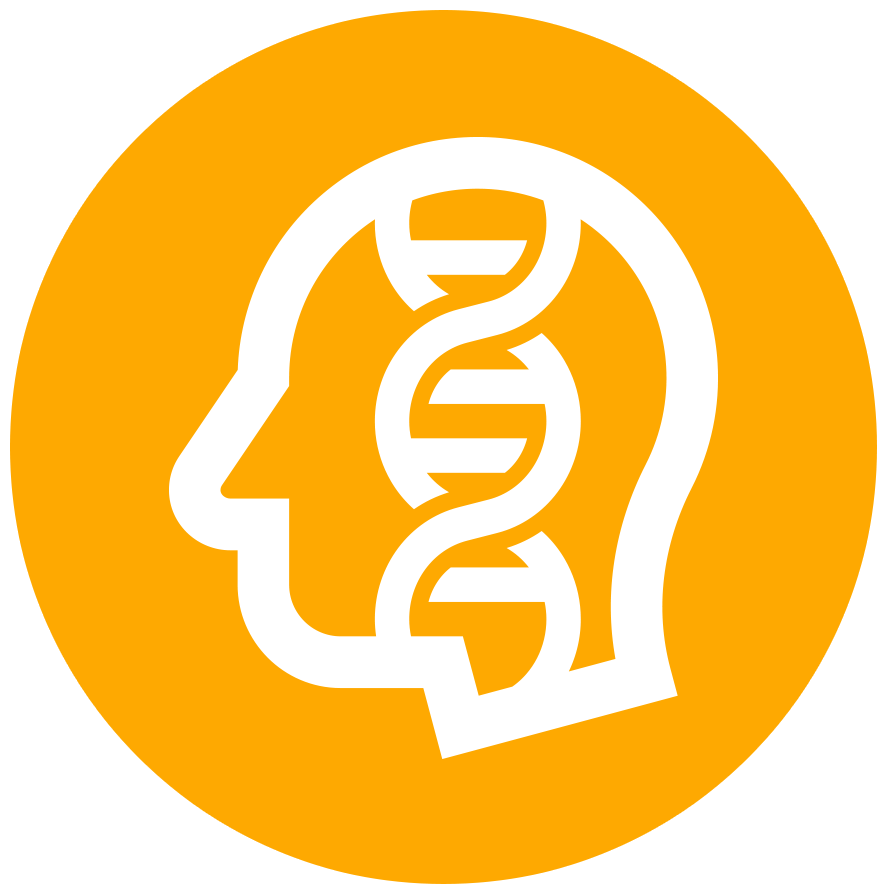
DMIT is a revolutionary system that identifies the most prevalent human intrinsic potential with the theory of human genetic inheritance.
The U.S. patented Reliable & Accurate DMIT system introduces:
It reveals the best way to be translated into education personal and career success. DMIT is a Completely scientific approach towards analyzing and understanding an individual's preferred learning styles and learning models in developing this system.
Dermatoglyphics Experts have conducted psychological and physiological pattern profiles with more than 500 thousand individuals since 1985 across China, Japan, Korea, Taiwan, Hong Kong, Singapore and Malaysia to generate a database for cross-comparison studies which can help an individual learn the way to discover their inner potential.
Watch People from Different Backgrounds talk about their experience with Brainwonders.
A happy Parent Suggest About Brainwonders DMIT.
A happy Parent Suggest About Brainwonders DMIT.
A happy Parent Suggest About Brainwonders DMIT.
Brainwonders has been a recipient of 5 National Awards for being the
Best
Career Counselling Centre and our contribution to Educational Counselling.








What is DMIT?
Dermatoglyphics Multiple Intelligence Test (DMIT) is a scientific method developed based on the study of fingerprints dermal ridge formations on the skin. It is rooted in the research that the patterns on our skin are correlated with innate potential and unique attributes and can provide insights into an individual's innate talents, learning style, and potential areas of strength.
How does the DMIT Analysis Work?
The DMIT test works by collecting and analysing genetically defined fingerprint patterns. These patterns are believed to be genetically linked and reflect the innate potential of any person. The analysis involves identifying various intelligences, such as logical-mathematical, linguistic, spatial, interpersonal, intrapersonal, musical, kinesthetic, and naturalistic. The results are then used to provide insights into an individual's strengths and weaknesses, helping guide career choices and educational paths.
What is the meaning of DMIT?
DMIT stands for Dermatoglyphics Multiple Intelligence Test. It is a scientific method used to understand an individual’s inborn talents, personality traits, and multiple intelligences by analyzing the patterns of fingerprints. The word "Dermatoglyphics" comes from the Greek words derma (skin) and glyph (carving), and it refers to the study of the unique patterns found on fingers and palms.
What are the benefits of DMIT?
1. Discover Inborn Talents
DMIT helps identify a person’s natural strengths and weaknesses. This is especially helpful for children, as it gives insights into their innate abilities.
2. Career Guidance
By understanding a person’s dominant intelligences and personality type, DMIT can suggest suitable career options. It’s often used by students after 10th or 12th to choose the right career path.
3. Better Parenting & Teaching
Parents and teachers can better understand how a child learns, behaves, and thinks. This helps them support the child’s learning style and emotional needs more effectively.
4. Personality & Behavior Analysis
DMIT gives a detailed report about a person’s personality traits, learning style, emotional quotient (EQ), and social behavior, which can improve relationships and communication.
5. Boosts Confidence & Self-Awareness
When individuals understand their unique qualities and talents, it increases their confidence, motivation, and self-awareness.
6. Helps with Learning Difficulties
DMIT can identify learning styles and potential challenges, helping in planning personalized education or therapy for children with special needs or learning difficulties.
7. Non-Invasive & Safe
DMIT is completely safe, painless, and non-invasive—it only requires fingerprint scanning and can be done at any age.
Is DMIT test helpful?
A DMIT test helps parents understand the calibre of the child about what are there stengths and weaknesses. Genetic factors also affect fingerprints so that parents can note any genetic inability in a child. DMIT is very helpful in understanding the multiple intelligence, interests and abilities of a child.
What is the DMIT test Cost?
The DMIT test coost anywhere in the range Rs. 6500/- to Rs. 8,000/-. The DMIT test cost of Brainwonders includes a lot of benefits. To get the best costing please do connect on 9987766531 / +91 9987422220.
How accurate is the dermatoglyphics multiple intelligences test?
It's totally accurate! But the research behind our test is rigorous and deep—we reveal in it what your multiple (not one) intelligences are.
What DMIT Claims:
Can we do a DMIT test at home?
An online DMIT test can help you identify the best path for your child’s success, saving time that might otherwise be spent on less effective approaches. DMIT can be conducted not only through in-person meetings but also conveniently online.
The Dermatoglyphics Multiple Intelligence Test (DMIT) is a powerful scientific tool that delves into an individual's distinctive talents and potential based on their fingerprints. It offers a profound understanding of a person's learning style, cognitive strengths, and weaknesses while also shedding light on potential career avenues. DMIT centres provide professional testing services and counselling to help individuals, especially children, unearth and nurture their inherent gifts and capabilities.
DMIT is a non-invasive and scientifically backed method that scrutinizes an individual's fingerprints to unveil their unique potential and abilities. It operates on the premise that fingerprints are intricately linked to brain development, revealing insights into one's genetic makeup, personality traits, learning style, and untapped potential. DMIT offers invaluable insights into various aspects of an individual's life:
DMIT centres provide a comprehensive array of professional testing and counselling services, including:
DMIT can benefit individuals of all ages and backgrounds, particularly:
Selecting the right DMIT centre can be a daunting task. Consider the following factors:
DMIT offers numerous advantages, including:
DMIT testing stands as an invaluable tool for individuals, especially children, in discovering and nurturing their unique talents and abilities. DMIT centers provide professional testing and counselling services, offering insights into an individual's learning style, cognitive strengths and weaknesses, potential career paths, and relationship compatibility. When choosing a DMIT centre, consider factors such as experience, expertise, reputation, and cost. With the insights gleaned from DMIT testing, individuals can optimize their personal and professional development, leading to greater success and fulfilment in life